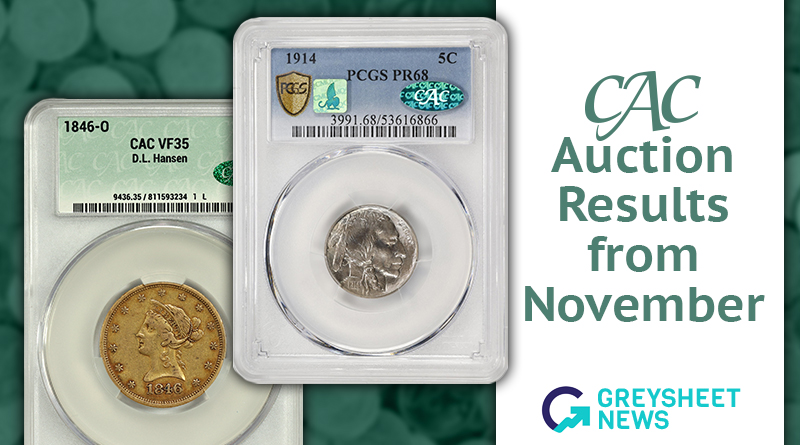- U.S. Coins /
- 2-Cent Pieces /
- 2-Cent Pieces (1864–1872) /
- 2-Cent Piece 2c 1864-1872 MS RB
2-Cent Piece 2c 1864-1872 MS RB
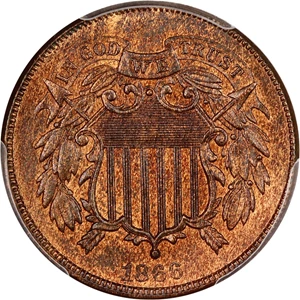
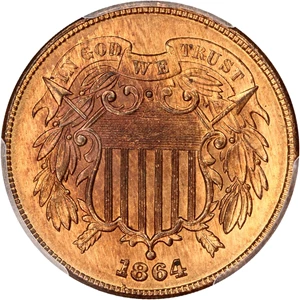



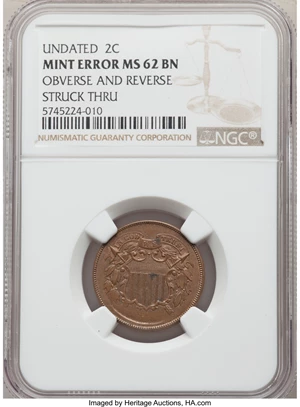
No Date 2C Two Cent Piece -- Obverse and Reverse Struck Thru -- MS62 Brown NGC....
Source: Heritage Auctions
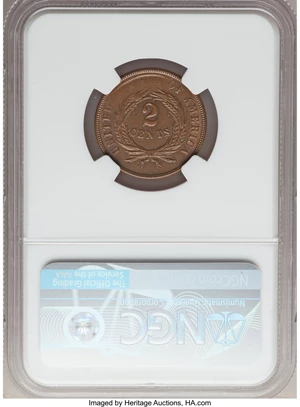
No Date 2C Two Cent Piece -- Obverse and Reverse Struck Thru -- MS62 Brown NGC....
Source: Heritage Auctions







Greysheet Catalog Details (GSID: 72348)
The 2 cent coin was struck by the United States Mint from 1864 through 1873 and was created to fill a need for small change during a massive Civil War-era coin shortage. The bronze 2 cent coin, designed by United States Mint Chief Engraver James B. Longacre, barely lasted a decade. Despite its relatively brief existence, it became historic for at least one reason, it was the first United States coin to bear the motto IN GOD WE TRUST, which today is seen on all United States coins.
While a popular series, the 2 cent piece is not widely collected as anything more than a type coin. However, there are series specialists who enjoy pursuing 2 cent coins. There are few big-ticket 2 cent pieces. Most in the lower circulated grades are priced at well less than $50. However, there are a couple regular-issue business-strike pieces that command three figure prices or greater. These include the scarce 1864 Small Motto that trades for about $200 and up and the 1872, which has a mintage of only 65,000 pieces and generally commands $300 or more. The 1867 doubled die is the major die variety of the series.
Obverse: An ornate shield flanked on the left and right by leaves with arrow heads and shanks (crossed behind) appear protruding at the four corners. A ribbon above the shield bears the words IN GOD WE TRUST, making this coin design the first usage this now-ubiquitous motto. The date is positioned at the bottom center.
Reverse: A large numeral 2 with the word CENTS below (smaller) in the center is framed by a well-defined wheat wreath tied at the bottom center by a simple ribbon. UNITED STATES OF AMERICA appears around the periphery.
Catalog Detail
Greysheet & CPG® PRICE GUIDE
From the Greysheet Marketplace
Buy Now: $6,012.50
Buy Now: $3,607.50
Buy Now: $5,503.75
Buy Now: $7,168.75
Buy Now: $11,423.75
Buy Now: $795.00
Buy Now: $11,793.75
Buy Now: $2,728.75
Buy Now: $7,099.38
Buy Now: $24,050.00
Related Stories (powered by Greysheet News)
View all newsAbout CDN Prices
All CDN prices are based on proprietary market knowledge and technology developed by CDN Publishing, LLC.
CPG® prices represent retail levels. Collectors should refer to CPG values as a starting place for their negotiations, or auction bid reference.
Greysheet/Greensheet prices are wholesale market levels for collectible coins/paper money intended to indicate what a dealer, or wholesale, buyer would pay for the described item in the specified grade. Greysheet/Greensheet represent "sight-seen" values based on a buyer's in-hand review. The actual value can be more or less than this depending on factors including eye appeal and market timing.
Bluesheet (NGC & PCGS) prices represent the highest sight-unseen offers to buy on dealer networks like CDN Exchange. In many cases, there are no active sight-unseen buy offers, so CDN looks to the recent lowest market values for such an item. For this reason, Bluesheet values typically represent the floor of the market for the specified item. CDN only tracks Bluesheet on certain items.
CAC prices are for U.S. coins that meet the standards of the Certified Acceptance Corporation. You can learn more about CAC on their web site.
Price movement is indicated for price changes in the last 30 days.
The prices listed in our database are intended to be used as an indication only. Users are strongly encouraged to seek multiple sources of pricing before making a final determination of value. CDN Publishing is not responsible for typographical or database-related errors. Your use of this site indicates full acceptance of these terms.


 Dealers Only
Dealers Only
















